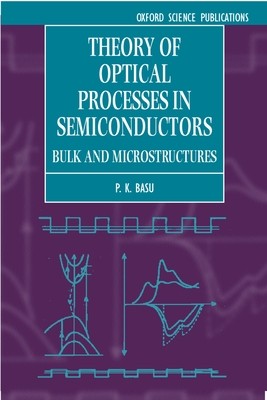
- We will send in 10–14 business days.
- Author: P K Basu
- Publisher: Clarendon Press
- ISBN-10: 0198526202
- ISBN-13: 9780198526209
- Format: 15.9 x 23.3 x 2.4 cm, softcover
- Language: English
- SAVE -10% with code: EXTRA
Reviews
Description
At the heart of much current technology, including fiber-optic communications, optoelectronic devices outperform those based on conventional semiconductors and are likely to be essential in future computers. This book provides a basic understanding of the physical phenomena involved and is ideal for graduate students and engineers interested in designing new materials, devices and applications in optoelectronics. The book gives simple quantum mechanical explanations of important optical processes; it describes band-to-band, intersubband and excitonic absorption and recombination in bulk, quantum wells, wires, dots, superlattices and strained layers including electro-optic effects. It also covers the necessary background material in the classical theory of absorption, quantization of radiation, and band picture based on k-p perturbation. Prerequisites for the book are a knowledge of quantum mechanics and solid state theory. Each chapter concludes with a set of problems, some of
which guide the reader to processes not covered in the text. Because it employs a simple one-electron theory throughout, the book is also accessible to advanced undergraduates in physics and engineering.
EXTRA 10 % discount with code: EXTRA
The promotion ends in 16d.20:04:07
The discount code is valid when purchasing from 10 €. Discounts do not stack.
- Author: P K Basu
- Publisher: Clarendon Press
- ISBN-10: 0198526202
- ISBN-13: 9780198526209
- Format: 15.9 x 23.3 x 2.4 cm, softcover
- Language: English English
At the heart of much current technology, including fiber-optic communications, optoelectronic devices outperform those based on conventional semiconductors and are likely to be essential in future computers. This book provides a basic understanding of the physical phenomena involved and is ideal for graduate students and engineers interested in designing new materials, devices and applications in optoelectronics. The book gives simple quantum mechanical explanations of important optical processes; it describes band-to-band, intersubband and excitonic absorption and recombination in bulk, quantum wells, wires, dots, superlattices and strained layers including electro-optic effects. It also covers the necessary background material in the classical theory of absorption, quantization of radiation, and band picture based on k-p perturbation. Prerequisites for the book are a knowledge of quantum mechanics and solid state theory. Each chapter concludes with a set of problems, some of
which guide the reader to processes not covered in the text. Because it employs a simple one-electron theory throughout, the book is also accessible to advanced undergraduates in physics and engineering.


Reviews